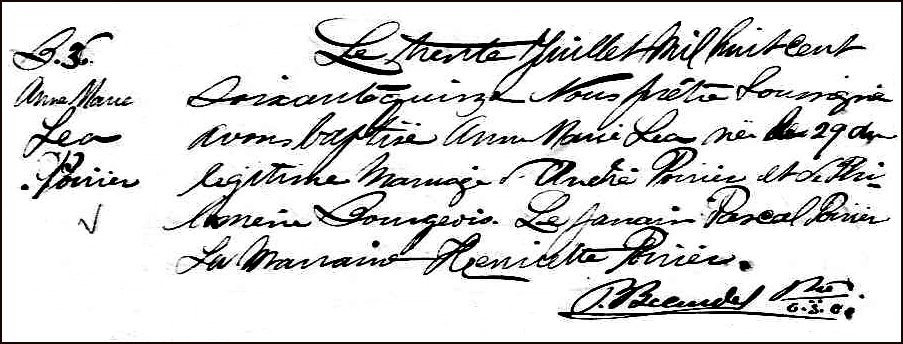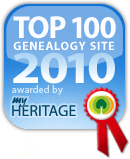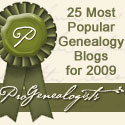I attended four lectures on this second and final day of the annual conference of the Polish Genealogical Society of America.
Pommerania, Pommern or Pomorze
Orvill Paller from the Family History Library in Salt Lake City presented a lecture on Pomerania, known in German as Pommern and in Polish as Pomorze.
The northern European area known as the Province of Pomerania was created by the Congress of Vienna and existed as a province of the Prussian Empire from 1815 until 1871 when it joined the newly formed German Empire.
After World War II, the Oder Neisse Line divided Pomerania in half, leaving West Pomerania in Germany and East Pomerania in Poland.
To find villages, parishes, and civil registration locations in Pomerania, a number of gazetteers are helpful. These include: Meyers Orts- und Verkehrs-Lexikon des Deutschen Reichs, Gemeindelexikon fí¼r das Königreich Preussen, Mí¼llers Verzeichnis der jenseits der Oder-NeiíŸe gelegenen, unter fremder Verwaltung stehenden Ortschaften, Amtliches Gemeinde- und Ortsnamenverzeichnis der deutschen Ostgebiete unter fremder Verwaltung, Spis miejscowości Polskiej Rzeczypospolitej Ludowej, and http://www.kartenmeister.com/ .
Sources for maps of Pomerania include Landkarten von Pommern, Karte des Deutchen Reiches, Mapa topograficzna z serii Messtischblí¤tter, and the Duke Philipp II Map of the Duchy of Pomerania-Stettin (1619).
Inventories of church records in Pomerania may be found in Die Kirchenbí¼cher in Pommern, Atlas der Kirchenprovinz Pommern 1931, Das Evanfelische Pommern, and Verzeichnis Pommerscher Kirchenbí¼cher in Polen.
Vital Records of Galicia
Matthew Bielawa presented a lecture on finding, reading, and understanding the vital records of Galicia.
Vital records in Galicia may have been microfilmed, not microfilmed but in a church or archive, or lost to disaster.
Today, records could be located at any of a number of archives in Poland and Ukraine. There are several places to search for records, and the records may be located at one, several, or none of those places. In Poland, these places include the State Archives, the Zabużański Collection, Archdiocesan/Diocesan Archives, the Department of Civil Records, or the Parish Church. In Ukraine, these places include the Central State Historical Archives of Ukraine, the Provincial Archives, the Civil Status Registry Office, and the Parish Church.
Galician records were most often maintained in a columnar format and were usually written in Latin. For a certain period of time, two copies of Galician records were maintained.
Understanding Polish & Russian Documents
Jonathan Shea presented a lecture on the Polish and Russian languages, two important languages in the genealogical records of Poland. He stressed that one must learn to pronounce Polish words correctly and that, unlike English, each Polish letter has a single sound.
Like Latin, both Polish and Russian are inflected languages. Nouns and adjectives have case endings attached to each word. These case endings tell the reader the part of speech to which each noun (and adjective) belongs. Verbs also have endings that identify number, gender, and tense.
Polish names are also accompanied by endings. Surnames ending in -ski are treated like adjectives; surnames ending in -wicz are treated like nouns.
Polish documents were written in either a columnar or paragraph form. In addition, vital registration certificates were issued that were forms into which information from the original records was transcribed. Other records that may be available include population registers (recording when people moved), coroner’s reports, premarital examination records, court records (probate, guardianship), military records, guild records, and Easter Duty registers.
In general, alphabetization of records in indexes will follow the Polish alphabet (where letters with diacritical marks follow those without) or the Russian alphabet (which differs considerably from the Latin alphabet).
The Holdings of American Roman Catholic Archives
Jonathan Shea’s final talk of the conference was on Roman Catholic Church records in America.
To find the churches of Polish ancestors in America, researchers need to identify the ethnic parish to which ancestors belonged. Catholic churches have registers of sacramental events in either pre-printed books or plain, lined ledgers. These records were maintained in Latin until 1964.
In addition to records of Baptism, First Communion, Confirmation, and Marriage, other records were kept by Roman Catholic parishes.
Parishes sometimes had to prove there were enough people to support an ethno-centric parish and a parish census for the locality may still exist .
Sick call records, burial and interment records, premarital examination records, dues books, records of those who kept their Easter duty, Jubilee books, dispensation books, and records of clubs and church societies may have been maintained.
No bishop’s copies of records were made in the United States. Some records have been microfilmed and are available at the Family History Library.
Copyright © 2008 by Stephen J. Danko








